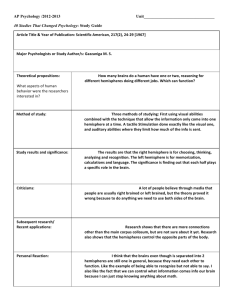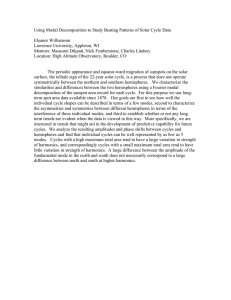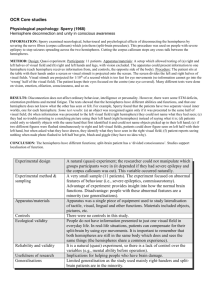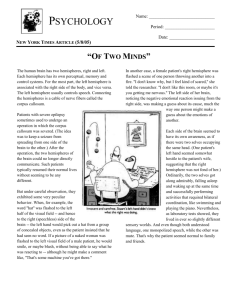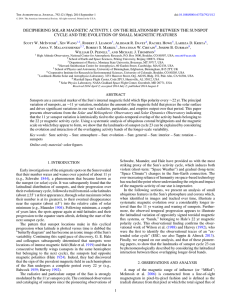Name: School: Location:
advertisement
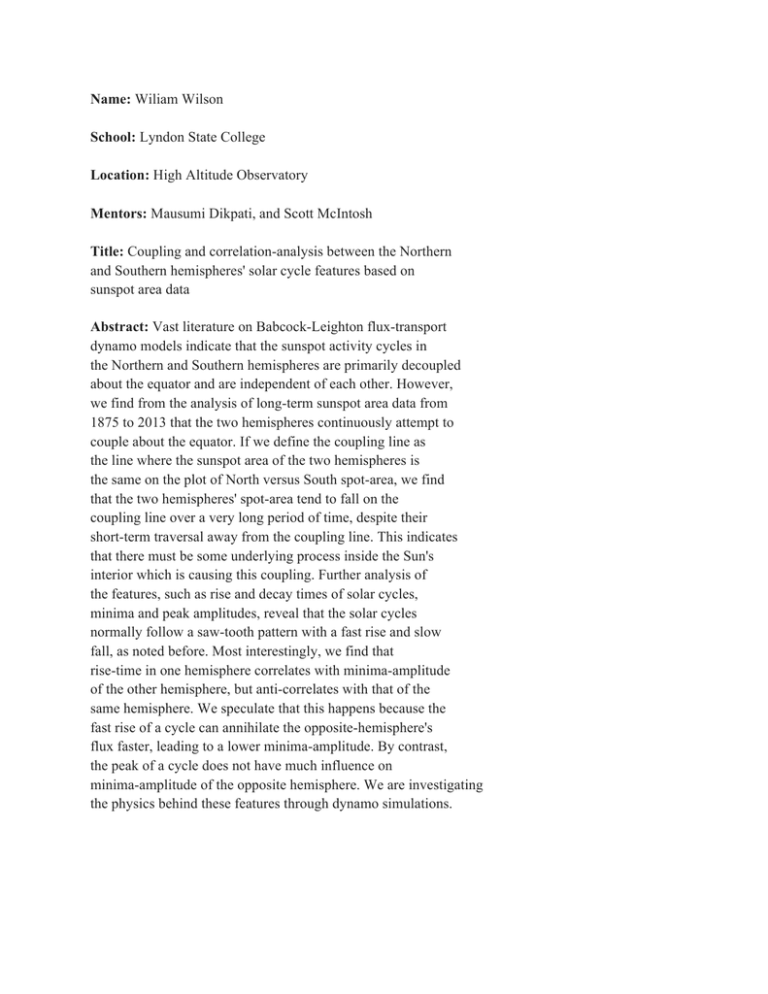
Name: Wiliam Wilson School: Lyndon State College Location: High Altitude Observatory Mentors: Mausumi Dikpati, and Scott McIntosh Title: Coupling and correlation-analysis between the Northern and Southern hemispheres' solar cycle features based on sunspot area data Abstract: Vast literature on Babcock-Leighton flux-transport dynamo models indicate that the sunspot activity cycles in the Northern and Southern hemispheres are primarily decoupled about the equator and are independent of each other. However, we find from the analysis of long-term sunspot area data from 1875 to 2013 that the two hemispheres continuously attempt to couple about the equator. If we define the coupling line as the line where the sunspot area of the two hemispheres is the same on the plot of North versus South spot-area, we find that the two hemispheres' spot-area tend to fall on the coupling line over a very long period of time, despite their short-term traversal away from the coupling line. This indicates that there must be some underlying process inside the Sun's interior which is causing this coupling. Further analysis of the features, such as rise and decay times of solar cycles, minima and peak amplitudes, reveal that the solar cycles normally follow a saw-tooth pattern with a fast rise and slow fall, as noted before. Most interestingly, we find that rise-time in one hemisphere correlates with minima-amplitude of the other hemisphere, but anti-correlates with that of the same hemisphere. We speculate that this happens because the fast rise of a cycle can annihilate the opposite-hemisphere's flux faster, leading to a lower minima-amplitude. By contrast, the peak of a cycle does not have much influence on minima-amplitude of the opposite hemisphere. We are investigating the physics behind these features through dynamo simulations.
